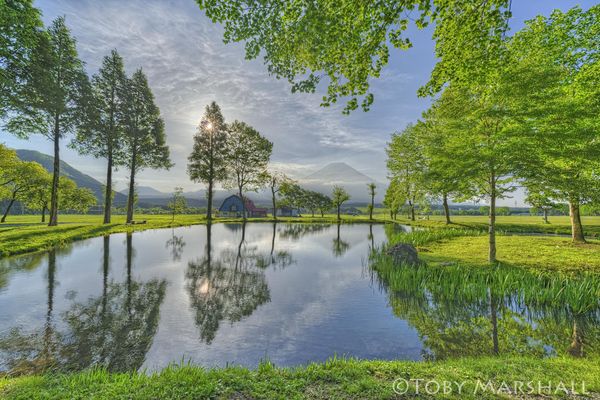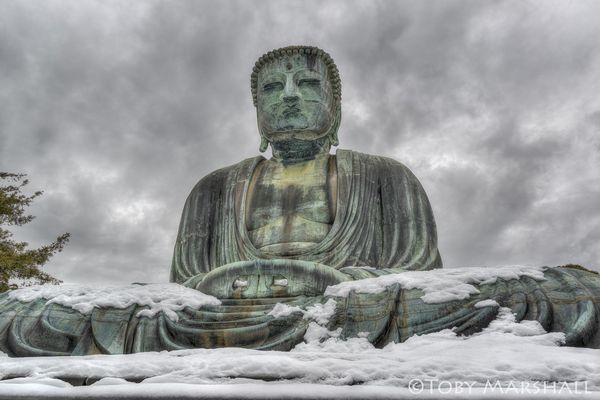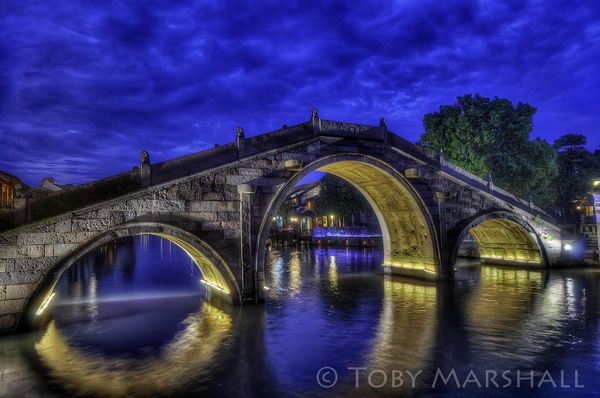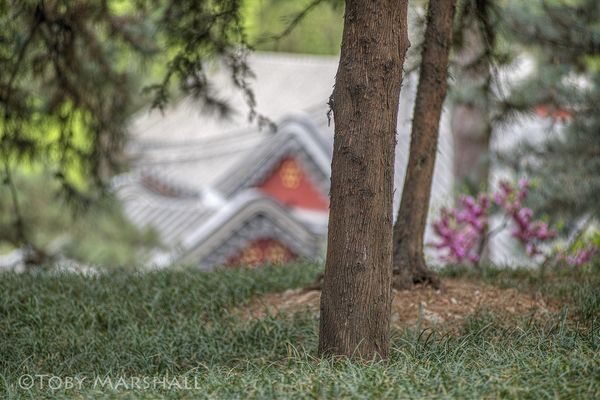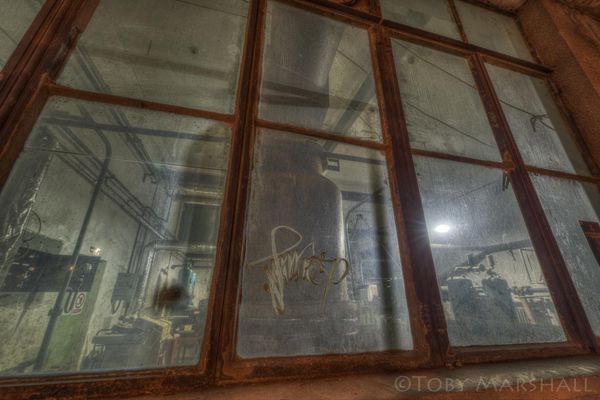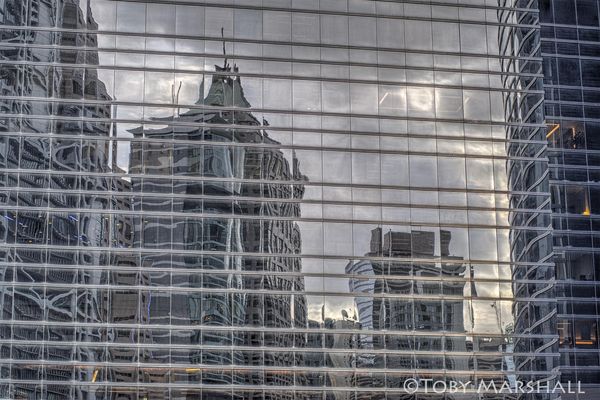HDR Software
Jun 3, 2014 07:04:09 #
What software do you recommend for achieving spectacular HDR results that is also easy to use?
Jun 3, 2014 07:20:50 #
Photomatix.
mooselover75 wrote:
What software do you recommend for achieving spectacular HDR results that is also easy to use?
Jun 3, 2014 07:24:10 #
Jun 3, 2014 07:32:31 #
I have tried most of the HDR programs out there. I have five on my computer at the moment, Photomatix, SNSHDR, Oloneo, Nik HDRefex Pro and Expose 3.
My recommendation by far is Photomatix. It has very good alignment algorithms for handheld shots, and by far the best ghost reduction options. After the HDR file is made, it has three different tonemappers available. The only real weakness of Photomatix in the past was the strong haloing using the "Details Enhancer" algorithm. That one still exists and has the widest range of effects (from very subtle to grunge). It also has a bit of a learning curve but is extremely flexible. However in the newest version, a "Contrast Optimizer" algorithm has been added which is really excellent and very quick to learn and easy to use. Finally a "Tone Compressor" option gives much more subtle results.
SNSHDR is little known, but also very very good. It is written by a single guy in Poland and is cheap, I believe around 40 euros for the "Home" version (you don't need the professional version unless you need to batch process images). It gives excellent natural-looking results right out of the gate, and adjustments happen in real time, so it is very easy to use. It does not have as wide a range of effects as Photomatix, being intended for a more natural, clean look, but it has a good set of adjustments and masking, allowing different adjustments of different parts of the image. Haloing resistance is truly outstanding. The biggest weakness is that the anti-ghosting is weak. What I often do is to create the HDR file in Photomatix and then tonemap that in SNS, which works very well.
I personally don't like the look of Nik so have not explored it too much. The control points are nice, but I find the various "looks" kind of gimmicky and not so different one from another.
Oloneo is OK, but doesn't offer much in the way of controls.
Expose 3 is an extremely well done program, very robust. It has the second-best ghosting control after Photomatix and full 32-bit processing. It is intended for very photorealistic output, and I have always been disappointed with the results--at least for my tastes.
I'm going to post three of my HDRs here in order that you can get an idea of what look I go for.
My recommendation by far is Photomatix. It has very good alignment algorithms for handheld shots, and by far the best ghost reduction options. After the HDR file is made, it has three different tonemappers available. The only real weakness of Photomatix in the past was the strong haloing using the "Details Enhancer" algorithm. That one still exists and has the widest range of effects (from very subtle to grunge). It also has a bit of a learning curve but is extremely flexible. However in the newest version, a "Contrast Optimizer" algorithm has been added which is really excellent and very quick to learn and easy to use. Finally a "Tone Compressor" option gives much more subtle results.
SNSHDR is little known, but also very very good. It is written by a single guy in Poland and is cheap, I believe around 40 euros for the "Home" version (you don't need the professional version unless you need to batch process images). It gives excellent natural-looking results right out of the gate, and adjustments happen in real time, so it is very easy to use. It does not have as wide a range of effects as Photomatix, being intended for a more natural, clean look, but it has a good set of adjustments and masking, allowing different adjustments of different parts of the image. Haloing resistance is truly outstanding. The biggest weakness is that the anti-ghosting is weak. What I often do is to create the HDR file in Photomatix and then tonemap that in SNS, which works very well.
I personally don't like the look of Nik so have not explored it too much. The control points are nice, but I find the various "looks" kind of gimmicky and not so different one from another.
Oloneo is OK, but doesn't offer much in the way of controls.
Expose 3 is an extremely well done program, very robust. It has the second-best ghosting control after Photomatix and full 32-bit processing. It is intended for very photorealistic output, and I have always been disappointed with the results--at least for my tastes.
I'm going to post three of my HDRs here in order that you can get an idea of what look I go for.
Jun 3, 2014 07:34:03 #
Jun 3, 2014 07:43:42 #
Jun 3, 2014 07:56:28 #
I have Photomatix and prefer to use Photoshop's HDR Pro as an export out of Lightroom. The reason I like it is that it doesn't look all cartoony and fake like a Transformers' movie poster. Every product out there does an excellent job, but here's the catch... They render a very different and specific look. Before you make a purchase please visit the website of Trey Ratcliff. He is recognized in the Smithsonian as "the godfather of HDR photography"
Here is a link to his site...
http://www.stuckincustoms.com/trey-ratcliff/
Here is a link to his portfolio...
http://stuckincustoms.smugmug.com
Best of luck to you in choosing a product!
Here is a link to his site...
http://www.stuckincustoms.com/trey-ratcliff/
Here is a link to his portfolio...
http://stuckincustoms.smugmug.com
Best of luck to you in choosing a product!
Jun 3, 2014 08:00:50 #
Jun 3, 2014 08:08:44 #
kymarto wrote:
I have tried most of the HDR programs out there. I... (show quote)
My goodness, these are stunning! Thanks for your very detailed information...I appreciate it!
Jun 3, 2014 08:36:51 #
So, I downloaded a free trial of Photomatix and messed around with a photo I'd taken in Acadia last year of The Bubbles. It wasn't bracketed, so I just adjusted the original exposure and this is what I got. I'd love some critique. Thanks!
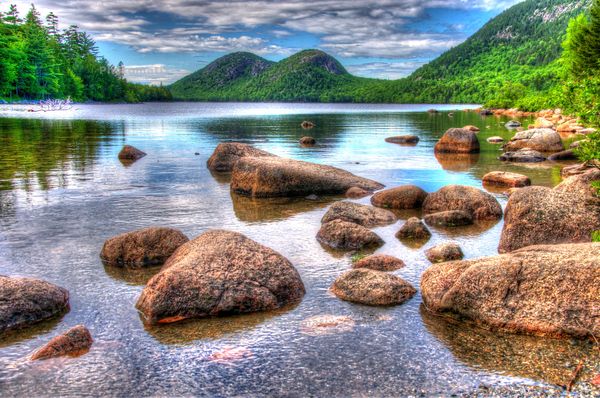
Jun 3, 2014 08:45:29 #
If you like it it is OK. This is most important to enjoy your result. I prefer realistic look of HDR photo. I recommend you to watch this video. http://www.picturecorrect.com/tips/how-to-create-realistic-hdr-photography/
mooselover75 wrote:
So, I downloaded a free trial of Photomatix and messed around with a photo I'd taken in Acadia last year of The Bubbles. It wasn't bracketed, so I just adjusted the original exposure and this is what I got. I'd love some critique. Thanks!
Jun 3, 2014 08:52:51 #
Just don't pay full price for photomatix (which is what I recently purchased). Google photomatix and coupon and get 15% off
Jun 3, 2014 08:54:52 #
Fishnwish wrote:
I have Photomatix and prefer to use Photoshop's HD... (show quote)
Photomatix has many options and "cartoony and fake" is only one of them. Have you tried "Contrast Optimizer"? Do you find these "cartoony and fake"?
Jun 3, 2014 08:54:55 #
MMC wrote:
If you like it it is OK. This is most important to enjoy your result. I prefer realistic look of HDR photo. I recommend you to watch this video. http://www.picturecorrect.com/tips/how-to-create-realistic-hdr-photography/
Thanks for the input...much appreciated! Thanks for the link too.
Jun 3, 2014 16:03:49 #
kymarto wrote:
Photomatix has many options and "cartoony and fake" is only one of them. Have you tried "Contrast Optimizer"? Do you find these "cartoony and fake"?
Honestly, no disrespect, and to each his own. I don't care for those images. The blacks all look crunchy and the mid-tone grays look like a long exposure waterfalls void of details. The dynamic range of contrast was exaggerated too far beyond what was there when the picture was taken.
Again, no disrespect, that is just my personal taste and I am very aware of a large audience that would be very appreciative of them. Composition is awesome!
Kind regards,
If you want to reply, then register here. Registration is free and your account is created instantly, so you can post right away.


